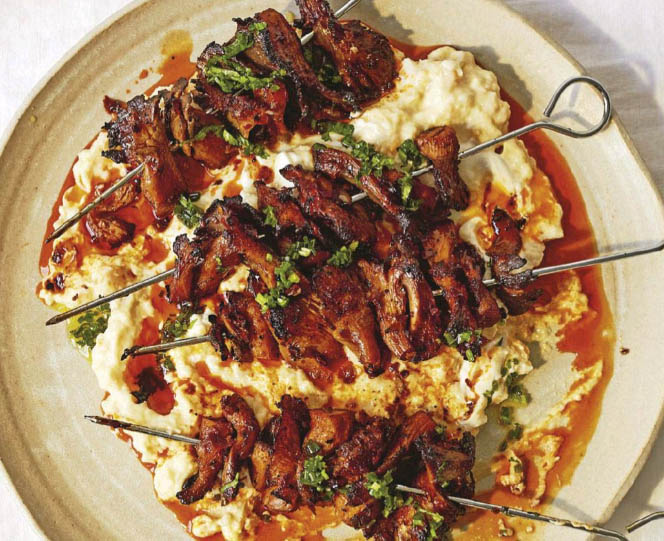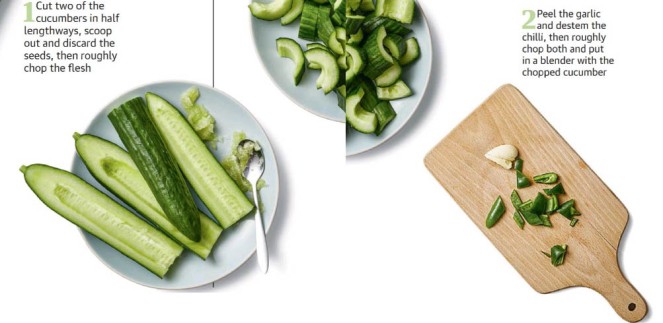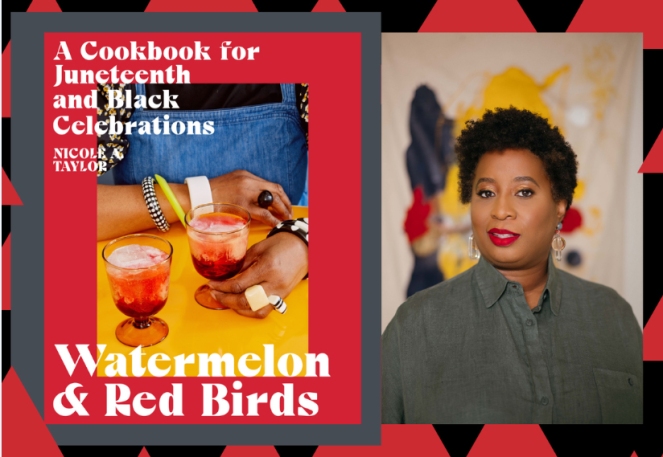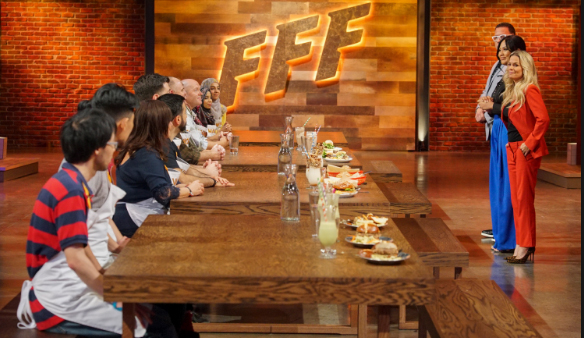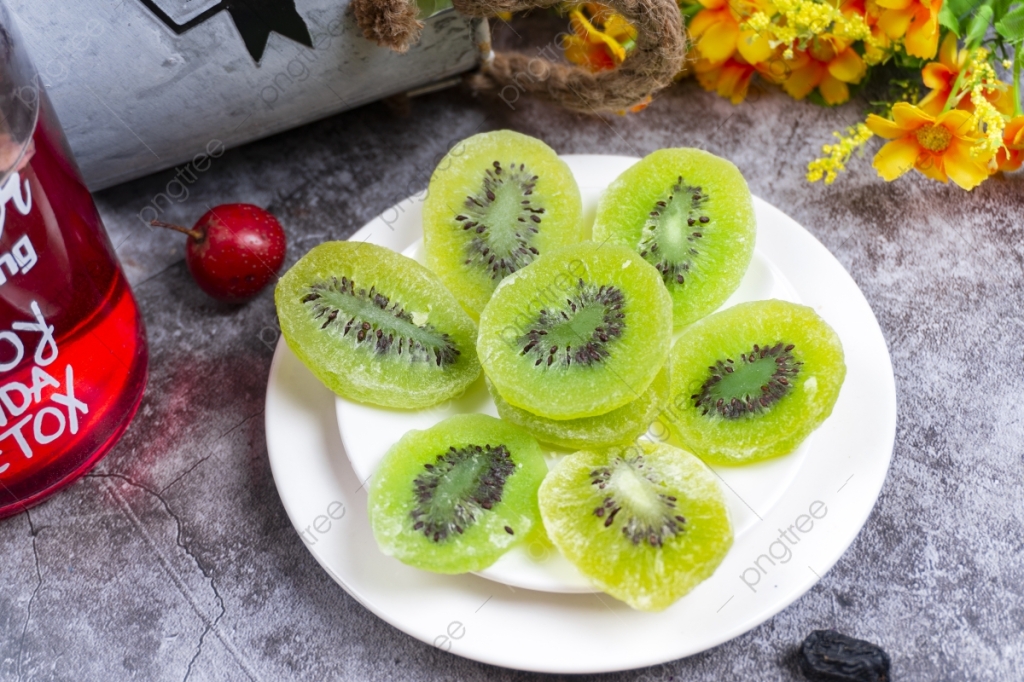pan and baking tray. A saucepan is essential if you enjoy pasta, rice or soup and a microwaveable bowl always comes in handy. Freeborn (whose new book Do Yourself a Flavour, certainly ought to be on your packing list) advocates for a more communal approach, based on her own university experience, so you might want to wait until you’ve arrived before stocking up.
Read More: Thai Crispy Rice Salad
“This avoids a lot of territory wars about dishes and whose they are – if everything is shared, then everyone has an interest in keeping things usable. A little bit of communism goes a long way in halls, and once you’ve figured out sharing equipment, you can split domestic costs like bin bags, washing-up liquid, toothpaste and salt too,” she says.
Read : Daily Foods Which Boosts Sex & Kills Sex
Freeborn also points out that food is more than just fuel for study and socialising: “Eat together when you can, be that with friends or flatmates. It’s essential for building friendships and maintaining good mental health.”
Lastly, once the dust has settled on freshers’ week, take a bit of time to explore your local shopping environment. The convenience store on campus is almost certainly not your cheapest option. Hunt down independent shops, local markets and superstores – and work out when they start getting out the yellow discount stickers each evening so you can bag yourself a bargain. Good luck!
Read: SUPERFOODS TO BOOST YOUR IMMUNITY
Practice makes perfect … Try out some easy recipes on your friends and family to build confidence in the shared student kitchen 400g mung dal (skinned yellow split mung beans)
- 4 cloves garlic, peeled and crushed
- 4cm piece of root ginger, peeled and cut into four
- 1 tbsp turmeric
- 4 small green chillies, 2 finely chopped, 2 left whole
- 2 tbsp ghee or groundnut oil 2 shallots, finely sliced
- 1 tbsp cumin seeds
- 1 tsp mustard seeds
- 1 tsp crushed chilli
Fresh coriander, chopped to serve
Wash the dal until the water runs clear, then drain and put in a large pan and cover with 2 litres of cold water. Bring to the boil and skim off any scum that rises to the surface.
Read : The Truth About Superfoods – Health and Wellness Blog
Add the garlic, ginger, turmeric and chopped chillies to the pan with a pinch of salt, turn down the heat, cover, leaving the lid slightly ajar, and simmer very gently for about 1½ hours, stirring occasionally, until the dal has broken down completely and become creamy.
Add boiling water or reduce the dal further to achieve your preferred consistency if necessary, and season to taste – I add about 1 tsp salt – then add the whole chillies and simmer for 15 minutes.
Read : Low Vitamin D During Pregnancy Increases Risk Of Multiple Sclerosis In Offspring
Meanwhile, heat the ghee or oil in a frying pan over a medium high heat and add the shallots. Stir until golden and beginning to crisp, then add the dried spices and cook for a couple of minutes until the mustard seeds are beginning to pop. Tip over the dal, stir in, and top with chopped coriander. Serve with plain rice or flatbreads.
Serves 4
- 1 medium carrot, washed
- 1 stick celery
- 1 red onion, peeled
- 4 tbsp extra-virgin olive oil, plus a little extra to serve
- 2 garlic cloves, peeled and crushed
- 1 tsp chilli flakes (optional)
- 2 x 400g tins whole plum tomatoes, preferably San Marzano
- 2 sprigs fresh basil, plus extra to serve
- 320g-400g spaghetti, depending on if it’s a first or main course
Chop the carrot, celery and onion into very small cubes (a food processor is the easiest way to do this, but be careful not to reduce it to a mush – to avoid this, start with the carrot, then add the celery and onion once it’s roughly chopped).
Heat the oil in a wide, deep, heavy-based pan (it needs to be big enough to hold the pasta, too) over a medium flame, then saute the vegetables until soft, but not brown. Stir in the garlic and chilli, if using, and cook for another minute or so.
Roughly mash, chop or squish the tomatoes into the pan along with their juice and the basil, and bring to a simmer. Turn down the heat until only the odd bubble rises to the surface, and cook for about 40 minutes, until thick. Turn off the heat, remove the basil and discard, then whiz with a stick blender until smooth, bearing in mind it will be hot. Season to taste and bring back to a simmer.
Cook the pasta in a large pan of boiling salted water for about six minutes, until bendy, but still chalky in the middle. Drain well, reserving a cup of the cooking water, and transfer to the pureed sauce. Stir in and cook for another six to eight minutes, or until done to your liking, tossing regularly to make sure it doesn’t stick and adding a splash of the reserved cooking water if the sauce gets too thick.
Divide between bowls and serve with a dash of extra oil, a scattering of basil leaves and some grated cheese.
Serves 1
2 eggs
Salt and pepper
Generous knob of butter (about a tablespoon)
Filling of your choice (optional)
Whisk together the eggs until just mixed, then season. Lay out any fillings by the hob.
Heat a 23cm pan over a mediumhigh flame and add the butter and swirl to coat. When the foam begins to die down, pour in the eggs. They should sizzle.
Shake the pan to distribute the eggs evenly, then leave for 20 seconds until they begin to bubble. Add any filling.
Using a spatula or fork, draw in the sides of the eggs to the centre while shaking the pan to redistribute the liquid to the edges. The omelette is done when still slightly runny in the middle.
Take off the heat, and fold two edges into the middle. Shake the pan so they roll together, then tilt it and turn your omelette on to a warm plate (you can tidy it up before serving if you like). Season and eat immediately!





